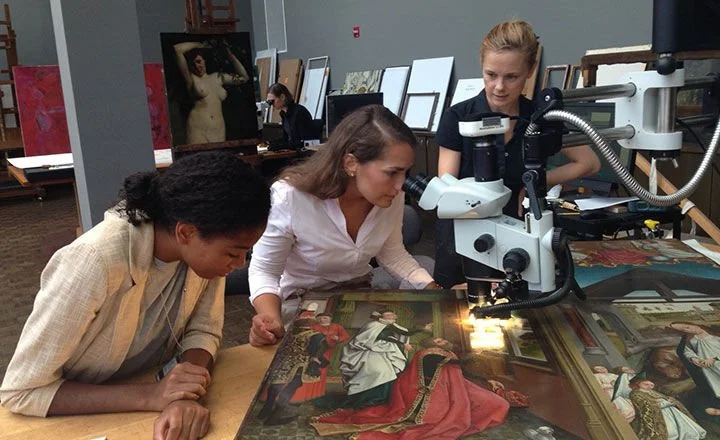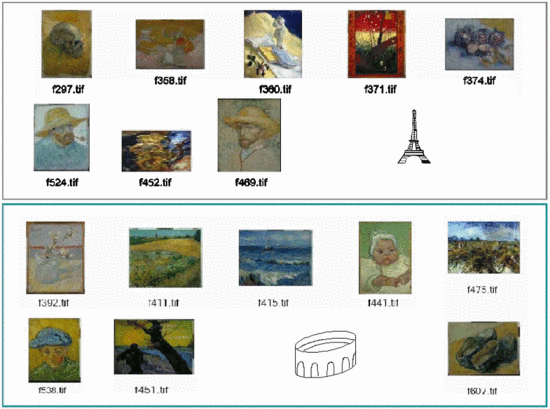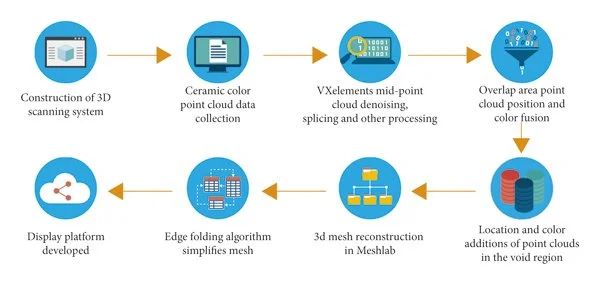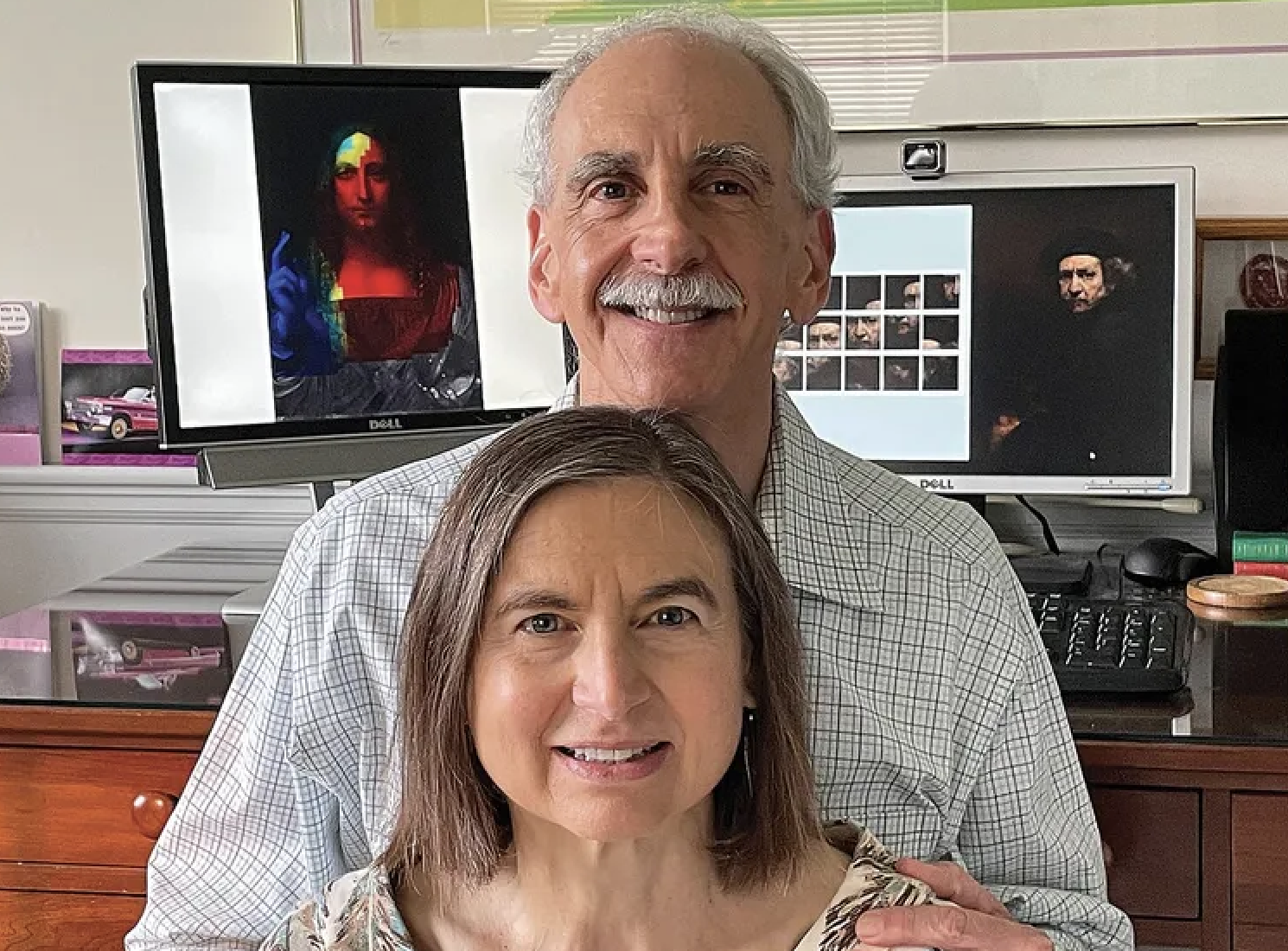By: Emma Voelker
introduction
The field of art conservation has long been a community of highly specialized and skilled professionals, often whom have dedicated hundreds of hours to understanding meticulous processes and materials. They are entrusted by institutions and the public to preserve and protect pieces of culture and history- works which often occupy fragile and delicate states for the remainder of their existence. Many of these pieces have lived long periods of time, having witnessed conflict, cultural changes, and geopolitical events over the course of history.
Image Source: Telecom.com
The theft and looting of art during WW2 and Napoleon’s art theft from conquered territories demonstrate instances of past sociopolitical circumstances erasing historical and cultural pockets of art that preceded them.
As conservators are trusted to preserve and protect, they are aware that art conservatorship training requires hours of practical experience and supervised work. Alongside these detailed processes, they continue to evolve into a world of widely adopted artificial intelligence technology. Taking and applying some of these advances and softwares, they may leverage the increasing applications of AI to enhance conservation processes, making necessary tasks that much more precise, effective, and their effects long-lasting.
HISTORY OF THE ART CONSERVATION FIELD
The occupational field of art conservation evolved from apprenticeship-based learning to an increasingly formalized educational path beginning in the early 1900s, with trailblazing graduate programs opening in the United States in 1970 and 1974. Perhaps the most notable of all field evolution has occurred in the past few decades according the Met Museum, being “the evolution of a sensibility that privileges the primacy of the works of art as an expression of the artist’s intent, and their manufacture and materials as a reflection of technological style.”
An increase in specialization within the industry may also be noted as specific areas of concentration are elected by conservationists possessing a formal education.
As understanding of the technical processes of art creation have evolved, as did methods of conservation and restoration (often going hand-in-hand). Conservators increasingly adhere to philosophies of reversibility, wherein anything done to the art may be reversed as necessary in due course. This is especially true as it applies to varnish- a tool which in its old chemical makeup form tends to yellow over time, needing replaced and maintained on a standard basis.
AI ALGORITHMS & CONSERVATION- A MATCH MADE IN HEAVEN
After decades or centuries of aging and damage, it is, in many cases, difficult to determine the original appearance of an artwork- a determination obviously crucial in its conservation. Especially when previous attempts at restoration have created additional damage or irreversible alterations to the original piece. This issue is one of the first to be addressed by implementation of AI (artificial intelligence) technology in the field.
AI algorithms as a technology are trained on input material (usually photos or text) and use deep learning techniques to then develop their own outputs. AI developed for purposes of art conservation are trained on vast collections of historical work for purposes of understanding artistic movements, physical materials in works, and the nuances of artists’ specific styles. In its capabilities to synthesize and interpret data, AI uses these imagery inputs and its own learned knowledge to reconstruct missing or damaged pieces of historical works. Recent image processing techniques have “been shown to characterize the stylometry of a painter’s work by analyzing fine details in the structure of a painting” (Borg, Dunn, Ang, Villis 2020). Meaning, the AI algorithm is taking the teeny-tiny nuances of the painting- such as brushstrokes, color hues, etc.- and it is able to provide information about the piece after having so closely analyzed its features.
These detailed elements of paintings, normally naked to a human eye, are able to be tracked, reported on, and usually described in intimate detail by computer algorithms. This information serves as a map of sorts for conservationists, who may then take action on the provided insight. For example, is there detected physical damage that needs addressed first? Is an area of paint in desperate need of repair? Did the algorithm detect an area where there is water damage to the piece? Such questions are able to be addressed by the AI algorithm, enabling conservators to begin on the physical work faster and more efficiently.
Image: Conservationists working on painting analyzation at the Metropolitan Museum of Art.
Image Source: Met
AI IN DETERMINING ARTISTS’ WORK
In the late 2000s, a stylometry analysis using AI technology was performed on a series of Van Gogh paintings, its goal to determine the painter’s style in a measurable way and to successfully date the paintings using data points assigned to painting characteristics. The technique operated under the assumption that “an artist’s brushwork can be characterized, (at least in part), by signature features (e.g. those arising from the artist’s habitual physical movements) and that such distinguishing quantitatively measurable characteristics might be found by machine learning methods and used as an additional piece of evidence in stylometry tasks” (Stylistic Analysis, 2009).
An intriguing undertaking on its own, the study has considerable implications for art conservancy efforts thanks to the AI’s overall competency in determining artwork dates and defining artist styles from its data points. It can be used in the same capacity in other contexts and within other identification projects.
Image: Examples of Van Gogh works used to train and challenge the AI algorithm.
Image Source: art feature
VIRTUAL REALITY AND ANCIENT CERAMICS
Another evolving form of technological advancement is virtual reality. As defined by Meta, a leader in the space, VR uses “cutting-edge graphics, best-in-class hardware, and artistically rendered experiences to create a computer-simulated environment” (Meta). VR technology and headsets are also on a journey to becoming more widely accessible, making virtual reality a feasible technology to integrate into any type of professional work.
VR has recently been coupled with ancient ceramics restoration specifically, as the medium presents its own unique challenges to conservators. As it stands, ceramics conservation requires a high cost in time for professionals with a concentration in the medium, of whom little exist.
Working to combat these issues, conservators are now able to leverage virtual reality technology to work on piecing together ceramics works in a completely digital space. The VR space allows for simulation of the reconstruction of the original ceramics shape before doing so in actuality. The data is gathered by scanning equipment, which “downloads” and displays each piece of the ceramic work virtually. In these cases “VR technology can repeatedly and effectively portray ceramic surface details and present detailed 3D models of complex ceramic models.” (Jiang 2022) Researchers were also able to develop a “virtual display platform,” the application of which would be a heightened visitor experience. If applied in a museum setting, the VR technology allows visitors to interact with the ceramics up-close, “and observe the rich glaze texture and morphological characteristics of ceramics from the details.” (Jiang 2022)
Image: “3D Reconstruction Scheme” for processes as described above.
Image Source: Ceramics Conservation using VR and 3D modeling
AI IN FORGERY DETECTION + CONSERVATION
As it has existed for years, the process of authenticating artwork is one requiring a careful eye and many years of expert experience. Nuances like brushstrokes, paint thickness, and other factors may tip off the right eye to determining the validity of an art piece. As it turns out, these processes are also well-suited for AI algorithms. These subtle judgements of an artist’s technique are easily identifiable by algorithms designed to do just that; analyze data points and draw conclusions.
Neural networks specifically, or a branch of machine learning particularly adept at pattern recognition, seems to be best suited for the task. Steven Frank is commercial technology law professional and artificial intelligence graduate degree-holder from Columbia. He recounts a project he took on alongside his art conservator wife Andrea- an attempt at an AI system that can determine whether an artwork is authentic. Explaining the process, he details programming the AI algorithm with 76 paintings- some by painter Rembrandt and the remaining by a multitude of other assorted artists. Several of the included works were created by Rembrandt admirers and students, boasting a style similar to his own. These paintings were included intentionally, since as Steven says, “Were we to choose 50 Rembrandt portraits and 50 portraits by other artists selected at random, we could train a system to distinguish Rembrandt from, say, Pablo Picasso but not from Rembrandt’s students and admirers (much less forgers).” (Frank 2022)
With a final set of 51 training images and 25 test images, the AI was successfully able to distinguish Rembrandt pieces from others at over a 90% success rate.
Image: Steven and Andrea Frank
Image Source: Onessimo Artist Feature
WHERE’S THE TECHNOLOGY GOING NEXT?
As conservator Julian Baumgartner (whose viral conservation videos you’ve likely watched on social media) has added:
“Conservation is still a craft. Despite all of the scientific advances, the practitioner still needs to have the technical ability.”
A sentiment seemingly echoed by professionals and conservators alike, the human aspect of art conservatorship is nowhere near replaceable. It is unlikely a machine or AI technology will gain enough trust to be solely responsible for the protection and maintenance of priceless works. For now, conservators can utilize artificial technology in a way which increasingly makes their own work easier and more efficient, rather than replacing it completely.
-
Borg, Braedon, Michelle Dunn, Andrew Ang, and Carl Villis. “The Application of State-of-the-Art Technologies to Support Artwork Conservation: Literature Review.” Journal of Cultural Heritage, March 5, 2020. https://www.sciencedirect.com/science/article/pii/S1296207419307575.
“Caring for the Met: 150 Years of Conservation.” The Metropolitan Museum of Art, August 1, 2022. https://www.metmuseum.org/about-the-met/conservation-and-scientific-research/conservation-stories/history-of-conservation.
“Conservation Specialties.” Conservation Specialties. Accessed October 12, 2023. https://www.culturalheritage.org/about-conservation/what-is-conservation/specialties-in-conservation.
Frank, Steven J. “This AI Can Spot an Art Forgery.” IEEE Spectrum, November 23, 2022. https://spectrum.ieee.org/this-ai-can-spot-an-art-forgery.
Frąckiewicz, Marcin. “The Role of AI in Art Conservation and Restoration.” TS2 SPACE, August 31, 2023. https://ts2.space/en/the-role-of-ai-in-art-conservation-and-restoration/.
Gill, Navdeep Singh. “Artificial Neural Networks Applications and Algorithms.” Real Time Data and AI Company, July 18, 2023. https://www.xenonstack.com/blog/artificial-neural-network-applications.
Nayeri, Farah. “The Masterpieces That Napoleon Stole, and How Some Went Back.” The New York Times, June 9, 2021. https://www.nytimes.com/2021/06/09/arts/design/napoleon-looted-art.html.
“Nazi Looted Art.” National Archives and Records Administration. Accessed October 12, 2023. https://www.archives.gov/publications/prologue/2002/summer/nazi-looted-art-1.
“The Science of Art Conservation: The Art of Preserving Art.” Spark, 2023. https://www.youtube.com/watch?v=oEsbOqR6VKQ.
White, Katie. “Meet Julian Baumgartner, the Conservator Whose Hypnotic YouTube Videos of Art Restorations Have Gone Viral.” Artnet News, April 7, 2022. https://news.artnet.com/art-world/conservator-julian-baumgartners-viral-youtube-videos-art-restoration-2094911.






